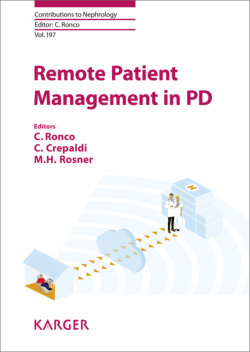Читать книгу Remote Patient Management in Peritoneal Dialysis - Группа авторов - Страница 26
На сайте Литреса книга снята с продажи.
Conclusion and Future Perspectives
ОглавлениеThe remarkable expansion of automated PD has been mostly related to the technological improvement of modern cyclers that today are safe, compact, portable, and easy to use. With the parallel improvement of the dedicated software, the spectrum of PD techniques has been expanded leading to a personalized prescription case by case depending on the peritoneal membrane characteristics and results obtained from kinetic models and simulations. The combination of all these elements makes possible today to make a true RPM. Further advances and developments can be expected for the future. Hardware can be further miniaturized, possibly leading to wearable solutions. New biosensors will be developed to enable a fully integrated remote machine and patient monitoring providing information on intraperitoneal pressure and operating a feedback on inflow and drainage kinetics. This will not only optimize exchange volumes and solute and water transport, but will also avoid short- and long-term complications. Moreover, biosensor could also be used to provide a turbidimetric measure of the effluent, avoiding unwanted delays in the diagnosis of peritonitis.
Software-guided prescription based on collected information will allow the cycler to optimize delivery of different PD modalities. Profiling the fill volume, glucose concentration, and dwell time will have a favorable effect on UF and solute transport in every single cycle [14].
Lastly, RPM could include more aspects of treatment, not just limited to the dialysis technique. Data on blood pressure and patient’s weight will be recorded together with other information, possibly captured by imaging or video conferences [15]. All these efforts will be directed to make PD a true home-based therapy with minimum requirement of hospital visits or admission.
